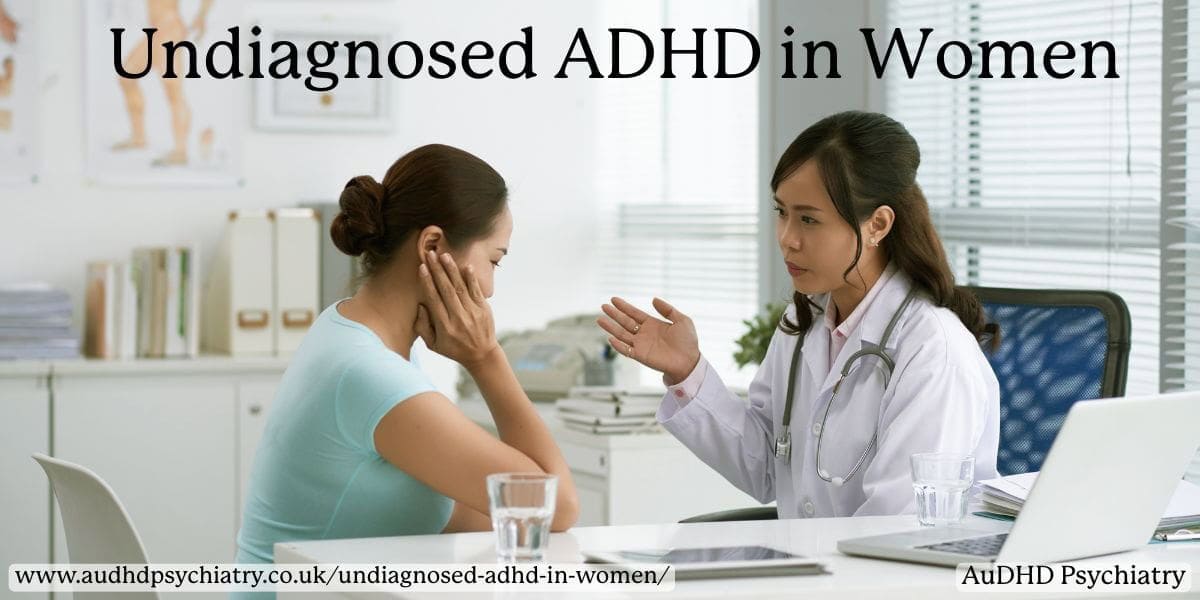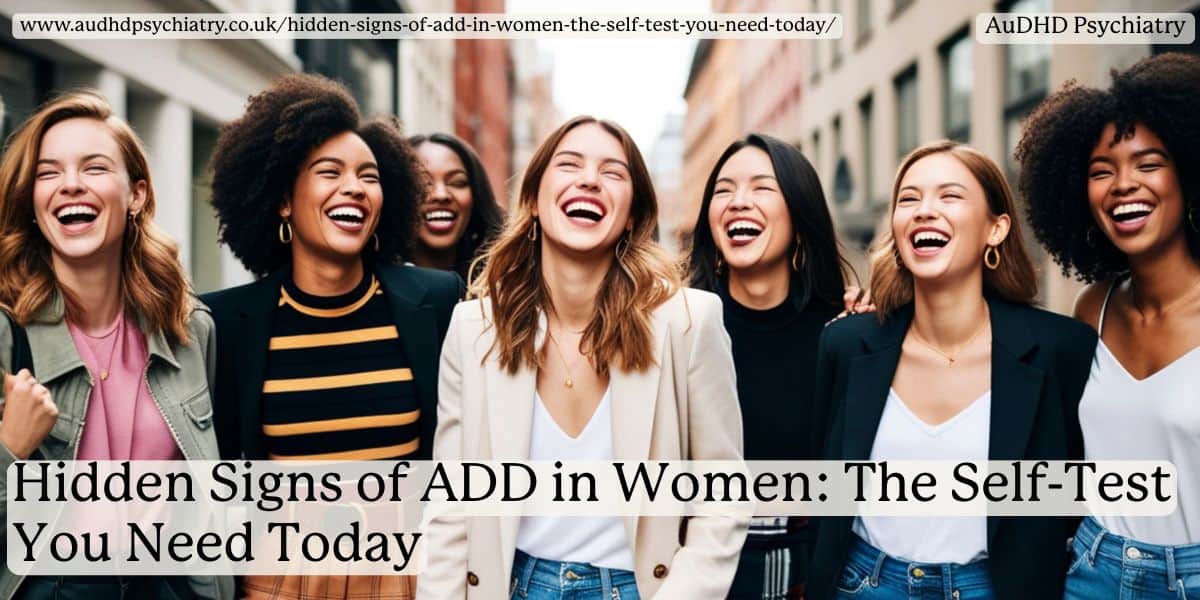
Why do so many neurodivergent people also identify as queer, and why are these identities so often connected in research, culture, and lived experience? The question is gaining attention as studies show a strong correlation between neurodivergence and queerness, but the conversation is not new. Both communities have long histories of being pathologised under the medical model, facing stigma, and being pushed to the margins of society.
Today, more people are recognising that the overlap between neurodivergence and queerness isn’t coincidental. From autistic individuals who challenge rigid gender norms to ADHDers navigating non-traditional relationships, lived experiences show consistent patterns that deserve thoughtful exploration. Understanding this link matters — not only for better support services, but also for increasing social acceptance and reducing cultural stigma in both the LGBTQ+ community and the neurodivergent community.
In this article, we’ll look at the shared history of marginalisation, the latest research, and the unique challenges faced by neurodivergent queer people. We’ll also discuss how concepts like neuroqueering and the neurodiversity paradigm provide new ways of understanding identity.
Starting with Why Queerness and Neurodivergence Matter
Queerness and neurodivergence have historically been treated as problems to be “fixed.” Under the medical model, both were pathologised: same-sex attraction was once listed as a mental disorder, and neurodevelopmental conditions such as attention deficit hyperactivity disorder (ADHD) and autism spectrum disorder were framed as deficits rather than differences. This shared history of stigma shapes how society continues to view queer identities and neurodivergent individuals today.
Shared Marginalisation
Both groups face marginalisation in ways that often overlap:
- Cultural stigma – Queer people and neurodivergent individuals are still told that their identities are a weakness or flaw.
- Medical discrimination – Just as ADHD diagnoses were historically dismissed as a moral failing, queer identities were once criminalised or subject to conversion therapy.
- Exclusion within communities – Even within the LGBTQ+ community, neurodivergent people sometimes struggle with acceptance, while neurodivergent groups may overlook issues of sexual diversity.
Why Framing Matters
Seeing queerness and neurodivergence through the lens of pathology limits opportunities for support and social acceptance. By contrast, newer frameworks like the neurodiversity paradigm and modern understandings of sexual diversity view these identities as natural variations of the human experience. Both challenge the rigid expectations of a heteronormative society and a neuronormative world, calling for more inclusive practices.
Parallels with ADHD Stigma
The myths surrounding ADHD diagnosis mirror those faced by queer communities. Many still question whether ADHD is a “real” condition, just as queer identities were once debated. Articles such as Is ADHD Real? illustrate how harmful misconceptions persist, delaying access to care and reinforcing shame. Recognising these parallels helps us understand why stigma continues to affect both groups.
Moving Forward
Understanding queerness and neurodivergence as intersectional identities rather than isolated conditions is essential. For some individuals, the journey also includes decisions about when to start ADHD medication as part of their support plan. By reframing them away from pathology and towards authentic self-expression, society can support neurodivergent queer people in living fully and openly. Neurodivergent assessments are a key tool in this process, offering valuable insights that help clinicians and support networks provide more personalised and effective care, validating both neurodivergence and queer identity simultaneously.
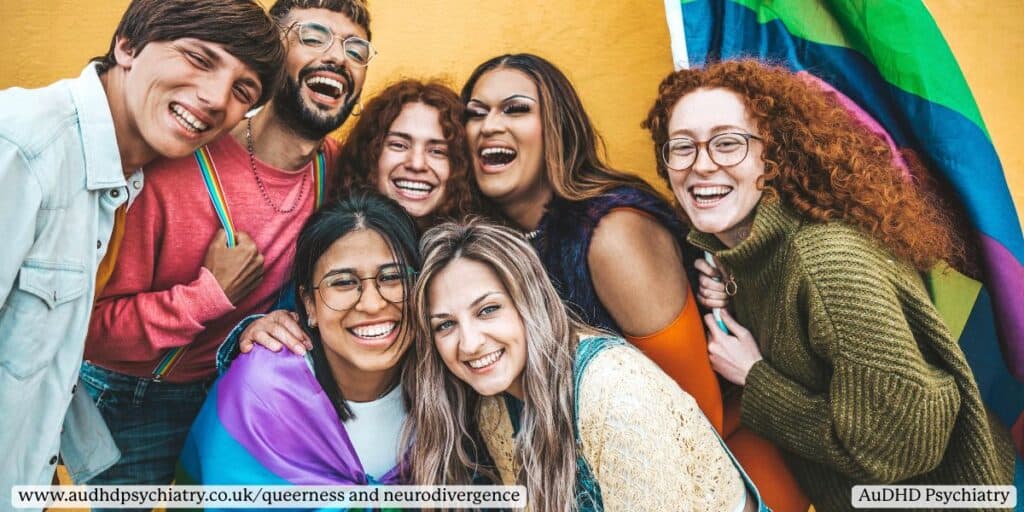
Where Does the Term “Queer” Come From?
The word “queer” has a complex history. Once used as a slur, it was reclaimed in the late twentieth century by activists who wanted an umbrella term spacious enough to include diverse sexual identities and gender expressions. That reclamation paralleled the shift from pathology to pride, as communities argued that difference does not require fixing.
The same move is visible in conversations about neurodiverse people, where identity-first language challenges old medical labels and invites social acceptance rather than shame.
From Insult to Collective Identity
- Community usage: The queer community adopted the term to signal solidarity across lesbian, gay, bi, trans, intersex, asexual and questioning identities, while resisting narrow social norms.
- Academic roots: In theory and disability studies, “queer” became a tool to critique rigid categories. It opened space to discuss power, cultural conditioning, and who gets to define “normal.”
- Practical impact: The term’s flexibility helps people describe lived experience without being boxed into gender roles that do not fit.
Why the History Matters for Neurodivergence
Reclamation shows how language can either harm or heal. Many neurodivergent people recognise this trajectory in their own lives: moving from stigma to self-definition. When families search for affirming support networks, curated directories help. If you’re considering a change in your care, you can transfer your ADHD care to a team that understands your unique needs and experiences.
Neuroqueering and Neuroqueer Theory
Neuroqueering brings together critiques of normativity from both queer thought and neurodiversity. It asks how people can live, relate, and communicate outside expectations that prioritise a single cognitive style or a single way to express sexuality and gender. Neuroqueer theory examines how rules about conversation, eye contact, timing, and intimacy are shaped by power, not biology alone.
Core Ideas
- Everyday practice: A neuroqueer individual may adapt environments rather than masking to fit a neurotypical population. That might mean sensory-friendly socialising, written-first communication, or renegotiating routines at home.
- Intersectional analysis: The intersection of neurodivergence with sexuality highlights how conformity pressures operate in parallel. Challenging one set of rules often supports freedom in the other.
- Policy relevance: Service design that assumes one communication template excludes many. Inclusive intake forms, flexible appointment formats, and paced information delivery reduce barriers.
From Idea to Action
People who are exploring identity sometimes want clarity about their cognitive profile as a first step to better support. A structured pathway helps. Clinicians can use insights from neuroqueer theory to avoid pathologising difference, prioritise consent in care, and co-create goals that respect autonomy. For families and peers, the takeaway is simple: adapt the world to the person, not the person to the world. Those seeking professional guidance can explore AuDHD assessment services to receive tailored evaluations and culturally competent support.
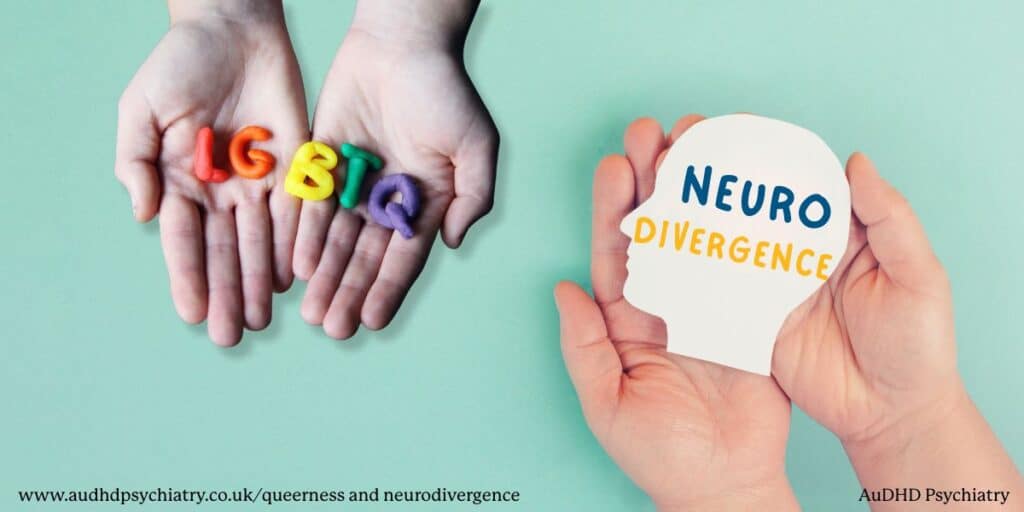
Correlation Between Neurodivergent People and the LGBTQ+ Community
Recent research has highlighted a strong correlation between neurodivergence and queerness. While this connection has long been recognised anecdotally within the queer community and the neurodivergent community, scientific studies are now confirming what lived experiences have shown for decades.
The Research Evidence
A growing body of studies suggests that neurodivergent people, including those with ADHD and autism spectrum disorder, are more likely to identify as part of the LGBTQ+ community than those in the wider population. Key findings include:
- Cambridge-led research – Dr. Varun Warrier and colleagues at the University of Cambridge found that autistic individuals show notably higher rates of varied sexual orientations and gender identities compared with neurotypical peers [1].
- Stronger patterns across autistic traits – Individuals with autistic traits reported higher rates of gender variance, non-heterosexual orientations, and questioning of traditional gender norms.
- ADHD overlap – ADHDers also report higher levels of queerness, often describing that both identities involve resisting conventional social roles.
Why This Matters
These statistics show that the link between neurodivergence and queerness is not a coincidence but a consistent pattern across different studies. This correlation:
- Highlights the importance of culturally sensitive care that addresses both neurodivergence and queer identity.
- Reinforces the importance of intersectional identities, where experiences of marginalisation are compounded.
- Calls for more mental health support to address the unique challenges faced by queer neurodivergent individuals.
Cultural and Clinical Implications
Articles such as Exploring ADHD Across Cultures remind us that diagnostic disparities exist not only across cultural groups but also within identity groups. The same is true here: without recognising how queerness and neurodivergence intersect, clinicians risk overlooking or misinterpreting ADHD symptoms.
The Bigger Picture
Understanding these emerging statistics helps us shift from anecdotal observations to evidence-based recognition of the neurodivergent queer community. For policymakers, educators, and healthcare providers, this means prioritising inclusive practices that validate both identities rather than forcing individuals to choose which part of themselves to disclose.
What Constitutes Neurodivergence?
Neurodivergence is an umbrella term for various conditions that influence the way individuals process information, learn, and engage with their surroundings. It challenges the assumption that there is one “normal” way of functioning. Instead, it recognises neurological differences as part of human diversity, much like cultural or gender diversity.
Core Neurodevelopmental Conditions
While the neurodivergent community is broad, some of the most widely recognised conditions include:
- Autism spectrum disorder (ASD) – Characterised by unique communication styles, sensory sensitivities, and differences in social interaction.
- Attention deficit hyperactivity disorder (ADHD) – Affects attention, impulsivity, and working memory. People with ADHD often bring creativity, high energy, and new perspectives to problem-solving.
- Dyslexia, dyspraxia, and dyscalculia – Learning differences that affect literacy, motor planning, and numeracy.
Other conditions, such as Tourette syndrome or bipolar disorder, are sometimes included in the wider neurodivergence umbrella because they influence cognitive or behavioural patterns in ways that diverge from neurotypical populations.
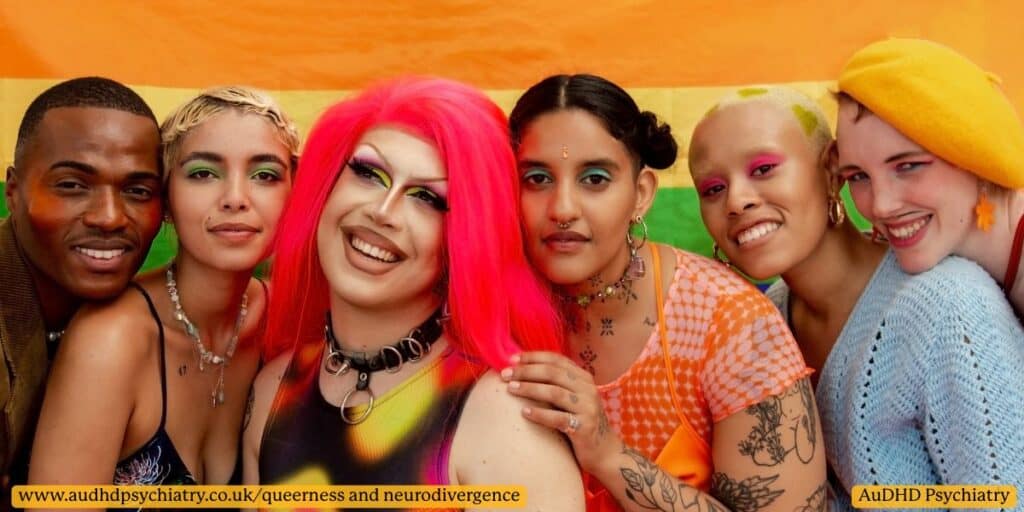
Beyond Deficits: Different Ways of Being
Historically, these conditions were medicalised as deficits or disorders to be treated. However, the neurodiversity paradigm reframes them as natural variations of the human brain. This shift is important because:
- It reduces stigma, emphasising that neurodivergent individuals are not “broken.”
- It promotes social acceptance, encouraging society to adapt rather than forcing neurodivergent people to conform.
- It highlights the strengths of neurodivergent identities, from innovative thinking to deep focus on areas of interest.
ADHD and Autism as Examples
Understanding ADHD and autism illustrates how neurodivergence is experienced in everyday life. ADHD, for instance, is often misunderstood as laziness or lack of discipline, when in reality it reflects differences in brain structure and function. Articles like How ADHD Affects the Brain show how symptoms such as inattention or hyperactivity are linked to differences in brain networks, not personal failure.
Why Definitions Matter in the Queer Context
For queer people, defining neurodivergence matters because it validates the intersection of neurodivergence and queerness. Without clear recognition, the challenges faced by neurodivergent queer individuals risk being ignored in healthcare, education, and policy. By framing both queerness and neurodivergence as authentic identities, rather than problems, we create a more inclusive foundation for support.
Gender Identity, Societal Expectations, and Neurodivergence
One of the most significant intersections between queerness and neurodivergence lies in the area of gender identity. Research shows that autistic people and ADHDers are more likely to question traditional gender norms and reject heteronormative roles. For many, their experiences of gender variance are inseparable from the way they process social expectations.
How Gender Identity and Neurodivergence Intersect
- Autistic traits and gender exploration – Autistic individuals often describe feeling less bound by social norms, which can make it easier to explore gender diversity and non-binary identities.
- ADHD and breaking gender roles – People with ADHD frequently resist rigid routines and societal pressures, including gender roles that feel restrictive.
- Queer identity as authentic self-expression – Both queer and neurodivergent identities involve living outside the status quo, challenging the idea that there is one correct way to be.
The Role of Societal Expectations
Living in a heteronormative society places pressure on people to conform to expected gender norms. For neurodivergent individuals, these expectations can feel especially alien, as they already experience the world differently from their neurotypical peers. This mismatch can lead to:
- Increased gender dysphoria when societal roles conflict with personal identity.
- Minority stress, a form of chronic stress experienced by marginalised groups.
- Barriers to diagnosis, since clinicians may focus on gender identity without recognising co-existing neurodivergence.

Gender Differences in Recognition
Women and non-binary people with ADHD or autism are often underdiagnosed because their symptoms present differently than in men. Autistic traits and inattentive ADHD can be overlooked when individuals mask their struggles to meet societal expectations. This underrecognition of ADHD in women mirrors the invisibility that many queer people face in healthcare.
Toward Inclusive Care
Acknowledging the link between gender identity and neurodivergence is not only about visibility but also about care. Culturally competent clinicians must understand how heteronormativity and neuronormativity intersect to disadvantage neurodivergent queer people. Supporting individuals requires:
- Gender-affirming care alongside neurodivergence-affirming support.
- Recognition that societal pressures, not personal flaws, often drive distress.
- Creating safe spaces where people can express both their gender identity and neurodivergence without fear.
By embracing this intersection, healthcare providers, educators, and communities can support neurodivergent queer people in living authentically, free from the double burden of stigma.
Why Are Neurodivergent People More Likely to Be Queer?
The question of why there is such a strong link between neurodivergence and queerness does not have a single answer. Instead, researchers and community voices point to overlapping experiences of living outside the status quo and questioning social norms. Both queer identities and neurodivergent identities resist the assumption that everyone should conform to rigid categories.
Shared Experiences of Nonconformity
- Breaking social roles – Neurodivergent individuals often struggle with or reject expected gender roles because these feel artificial or constraining. Similarly, queer people resist societal pressures that dictate sexual orientation or gender identity.
- Questioning cultural conditioning – Many neurodivergent people describe how their unique perspective makes them more likely to challenge societal expectations. This questioning aligns closely with queer people who push back against heteronormativity.
- Living authentically – Both communities prioritise being their authentic self, even if it means navigating stigma or exclusion.
Beyond Coincidence
The overlap between neurodivergent identities and queer identities can also be explained by how both groups experience the world. For example:
- Neurodivergent people often notice inconsistencies in social norms, making them more open to alternative identities.
- Many autistic people describe rejecting binary categories, which reflects the fluidity seen across sexual identities and gender diversity.
Why This Matters
Understanding the link between neurodivergence and queerness helps clinicians, educators, and families provide better support. If you’re considering your options and want to explore further, you can get a BUPA autism diagnosis to ensure that you’re getting the right care and support for your unique needs. Rather than treating queerness or neurodivergence as isolated, professionals can consider the intersection of neurodivergence when assessing needs. This approach reduces misdiagnosis, improves social acceptance, and validates the lived realities of neurodivergent queer individuals.
Ultimately, both groups remind us that there are many different ways to exist and thrive. By reframing diversity as a strength, society can move closer to true inclusivity.
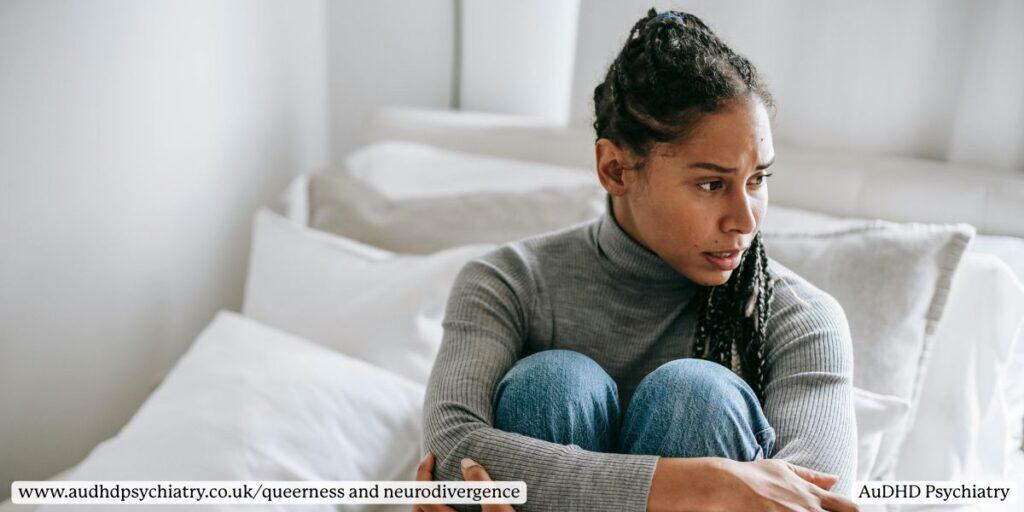
Mental Health Challenges
While being queer or neurodivergent is not inherently negative, the pressures of living in a heteronormative society and a neurotypical world create unique mental health challenges. These challenges stem not from identity itself, but from stigma, exclusion, and systemic inequality.
Anxiety, Depression, and Minority Stress
Evidence suggests that queer neurodivergent individuals may be more vulnerable to mental health difficulties, with conditions like anxiety and depression appearing more frequently in this group.
- Minority stress – The chronic stress of living with multiple marginalised identities.
- Social rejection – Both communities experience rejection from families, schools, and workplaces, which can damage self-esteem.
- Lack of representation – Few role models openly embody both queer identities and neurodivergent identities, leaving people feeling isolated.
Emotional Regulation and Neurodivergence
Neurodivergent people, especially those with ADHD, already face challenges with emotional regulation. When combined with the stressors of queer stigma, this can intensify difficulties. Articles such as ADHD and Emotional Dysregulation explain how these overlapping struggles can impact relationships, work, and daily functioning.
Intersectional Identities and Unique Challenges
People with intersectional identities face compounded barriers:
- Limited access to support services that understand both identities.
- Increased risk of social anxiety due to exclusion from both the LGBTQ+ community and neurodivergent groups.
- Higher likelihood of negative encounters with healthcare providers who lack training in culturally competent, affirming care.
Building Resilience
Despite these challenges, many neurodivergent queer individuals build strong coping strategies and find strength in community. Access to peer support, therapy, and culturally competent clinicians can help reduce distress. Addressing the mental health challenges this population experiences is not only about reducing harm but also about fostering environments where people can thrive authentically.
Neurodiversity as Gender and Sexual Diversity
The neurodiversity paradigm challenges us to view neurological differences not as deficits but as natural human variation. In many ways, this mirrors how society is beginning to view gender diversity and sexual diversity as valid expressions of identity rather than problems to be corrected.
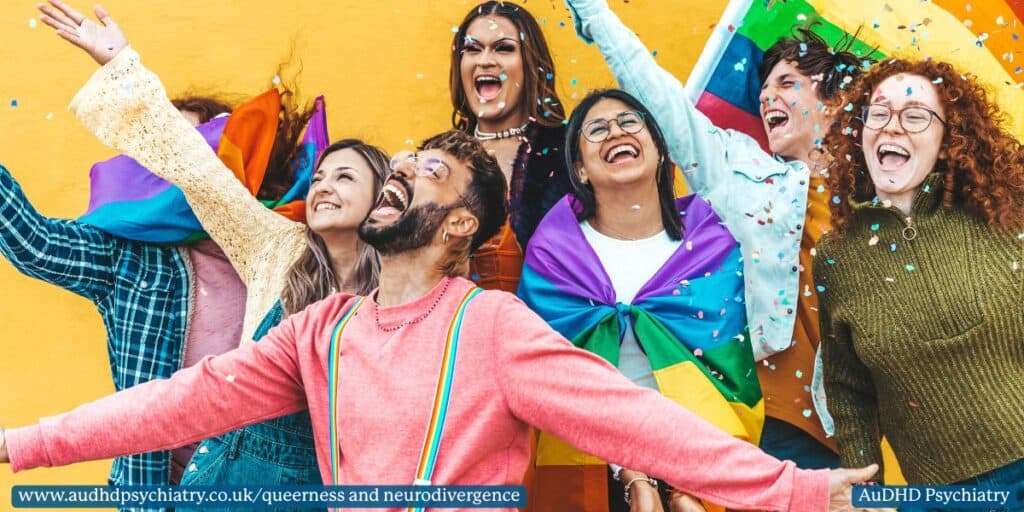
Shared Disruption of Norms
Both neurodivergent people and queer people disrupt rigid categories:
- Just as there is no single way to be heterosexual or cisgender, there is no one way to think, feel, or communicate.
- Neurodivergence and sexual orientation both question the idea that the “average” or “majority” experience defines what is normal.
The Role of Neuronormativity and Heteronormativity
The concepts of neuronormativity and heteronormativity overlap significantly. Both impose restrictive rules on how people “should” behave:
- Neuronormativity assumes that neurotypical people set the standard for communication and behaviour.
- Heteronormativity assumes that heterosexual, cisgender identities are the default.
For neurodivergent queer people, navigating both sets of expectations means carrying a double burden of social policing.
Clarifying Identities
Articles like ADD vs ADHD remind us that even within a single diagnosis, there are multiple valid presentations. This mirrors the diversity seen across sexual identities and gender identities. Both highlight the need for flexible, inclusive frameworks that allow people to define themselves rather than being categorised from outside.
Why This Lens Matters
Seeing neurodiversity as gender and sexual diversity helps create a unifying perspective:
- It validates the lived realities of people who belong to both groups.
- It provides a common language for advocacy across disability studies, queer theory, and healthcare.
- It strengthens calls for systemic change in education, healthcare, and law, ensuring that all identities are recognised and respected.
By embracing the parallels between neurodiversity and sexual diversity, society can move beyond tolerance to genuine acceptance, allowing neurodivergent individuals and queer people to live openly without compromise.
Queerness and Neurodivergence: Conclusion
Neurodivergence and queerness intersect in meaningful ways: both have been pathologised, both challenge rigid social norms, and both benefit when care is affirming rather than corrective. Emerging research, including Cambridge-led work, shows a strong correlation between these identities, while lived experience highlights shared pressures such as minority stress and masking. Adopting the neurodiversity paradigm and neuroqueer practices shifts focus from fixing people to adapting environments.
If you want personalised guidance from clinicians who understand the overlap of identity and attention, book a consultation. An affirming assessment clarifies needs and aligns support with your goals. You can start here: Book your assessment with AuDHD Psychiatry and experience thorough, confidential care that meets your unique needs.
You Might Also Like
Contact Us
We’re here to answer any questions you might have.
Get in Touch
Opening Hours
Contact Form
We’re here to help. Reach out and we’ll get back to you within 24 hours (Monday – Friday).


